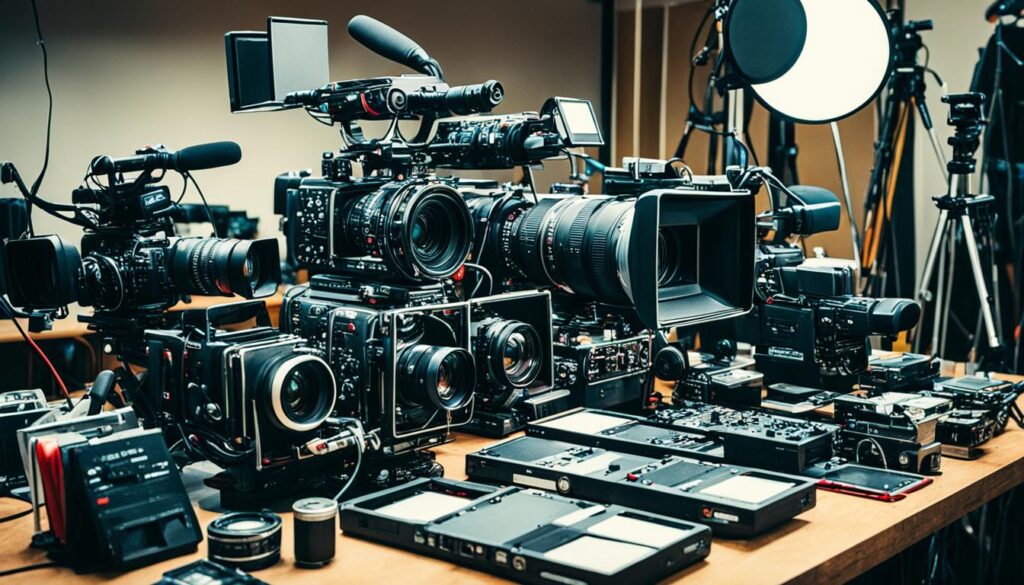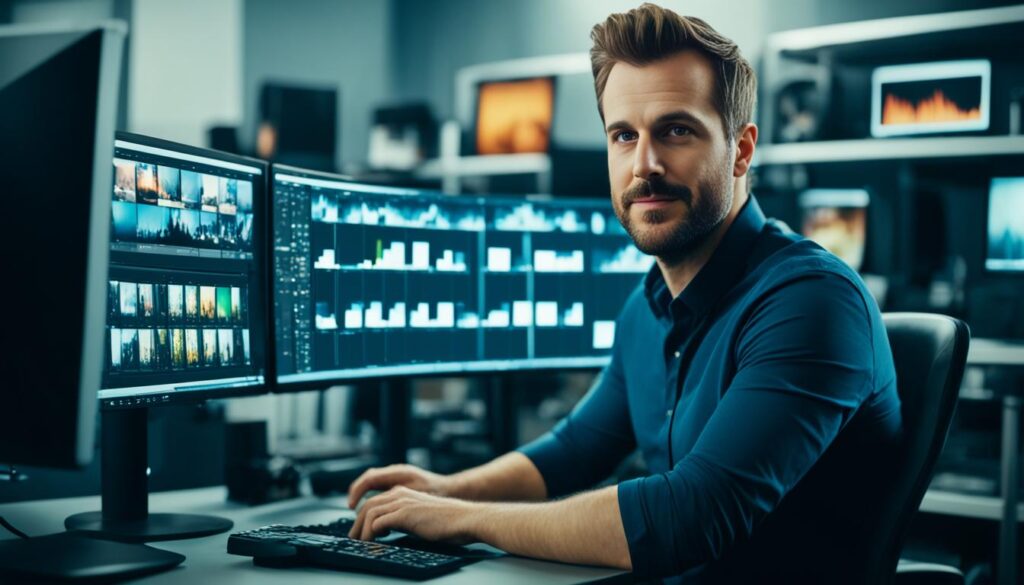The allure of the silver screen has captivated many, and the ambition to create a cinematic piece is a revered aspiration. Starting a film project is neither for the faint-hearted nor for the undisciplined; it demands a synchronized dance of creativity and meticulous planning. Individuals eager to traverse the journey of initiating a film production are tasked with crafting a narrative blueprint that brings their cinematic dream to life. Translating the mercurial essence of an idea into a structured screenplay, showcasing compelling characters, and establishing a riveting storyline are the foundational steps to make a film. Every successful movie begins as a whisper of inspiration that undergoes transformation through scrupulous development, all the while navigating the intricacies of budget constraints and the dynamics of team collaboration.
The canvas of film production is vast and complex, yet navigable with the right mindset and tools. Fostering a concept demands an embrace of spontaneity and the diligent curation of ideas, all aimed at outlining the stakes and thrills of the narrative. Early financial foresight into the costs involving personnel, locations, and equipment ensures the feasibility of the project, while utilizing resources such as iDeas for Writing advances the potency of the script. Recruitment of a synergetic cast and crew is essential, and technological aids like CamTrackAR help visualize the ambitious shots before any filming commences. The blueprint to a successful film lies in a well-organized production schedule that enables the transformation from concept to reality.
Confronting the swarm of tasks in filmmaking can be overwhelming; however, adherence to an organized step-by-step approach simplifies the journey. The guide that follows is tailored to inform and inspire the enthusiastic creator ready to undertake the compelling challenge of producing a movie from script to screen.
Key Takeaways
- Understanding the intricacies of film production begins with a solid conceptual foundation.
- Early budget formulation is critical to ensure a sustainable production path.
- Brainstorming and tool utilization enhance script quality and narrative depth.
- Recruiting a cast and crew compatible with the film’s vision underpins a cohesive production.
- Technological advancements, such as virtual previsualization, contribute to cost-effective and efficient planning.
- Comprehensive storyboarding and meticulous scheduling are paramount in orchestrating a smooth filming process.
How do I start my own film?
The filmmaking process is a journey that transcends from a single idea to the creation of a cinematic experience. With a solid film development guide, anyone can navigate the multifaceted stages of creating a movie from scratch. Initiating a film production demands clear vision, systematic planning, and unwavering passion vowing to tell a story that captivates and resonates.
Conceptualizing Your Vision
At the onset, conceptualizing the film’s vision is your inaugural step. It’s about metamorphosing that sudden spark into a cohesive story, one with compelling plots and characters. As you embark on the steps to produce a movie, it’s crucial to capture spontaneous ideas, absorbing and expanding them through artistic brainstorming, thus laying the foundation for an enthralling narrative.
Budgeting Essentials for Your Film
Transitioning from idea to action involves meticulous budgeting for film production. It’s about setting a financial framework that encompasses all production facets—from crew wages to post-production polish. A balanced budget reflects a pragmatic yet ambitious approach to resource management, ensuring the vision isn’t compromised by financial constraints. Employing a budgeting formula helps you forecast and track expenses, a cornerstone in film project planning.
The Pillars of Pre-Production Planning
- Storyboards and Mood Boards: These are the illustrated blueprints of your cinematic opus, crucial for pre-visualizing scenes necessary for seamless production.
- Location Scouting: Identifying and securing the perfect backdrops that align with your film’s aesthetic.
- Equipment Checklists: Ensuring all technical requirements are met to capture the envisioned scenes without hiccups.
- Central Project Plan: An all-encompassing plan that guides every step of the production with precision and uniformity. It’s imperative to stick to your pre-production steps to avoid any major setbacks once filming commences.
Recruiting Your Cast and Crew
The final act before the cameras roll in is assembling a film team tailored to your project’s needs. This involves meticulous hiring for film production where you sift through portfolios and conduct auditions to gather a cast that can breathe authenticity into your characters. Likewise, crew selection is pivotal; their skill and experience shape the polish and professionalism of your production. Remember, the synergy of a well-chosen team can propel a film to exceptional standards.
The Filmmaking Process: From Pre-Production to Shooting
Transitioning from the pre-production phases of creating a movie from scratch, filmmakers embark on the vital production stage. This juncture sees scribbled ideas and storyboard sketches morph into vivid, visceral cinematography. The well-orchestrated mayhem of production is where the rubber meets the road, and meticulous preparation paves the way for the raw reality of filmmaking.
Achieving cinematic magic involves adhering to an organized shooting script and a precisely structured schedule, crucial in managing what often transpires as a marathon of takes and retakes. Integral to the production phase are the film production stages, which dictate the day-to-day operations required to breathe life into the script’s dialogue and action.

As a centerpiece of film production stages, the execution on set can be both exhausting and exhilarating. Directors and producers invest innumerable hours of labor with the team, cultivating scenes that might encompass hours of footage for what will become seconds in the final cut. It is during these steps to make a film that the capability to adapt and improvise becomes invaluable.
Embracing innovative technologies and unconventional methods can greatly enhance the efficiency and creativity on set. For instance, leveraging a smartphone to capture preliminary angles and locations offers a flexible, cost-effective approach to visualize and plan the essential shots needed for the project.
The dedication to the craft shown during this stage sets the stage for the magic felt by audiences worldwide—capturing not just visuals, but the very essence of storytelling through film.
Post-Production: Crafting the Final Product
Once the cameras stop rolling, the complex journey of post-production begins, where creative vision and technical expertise converge to shape the raw material into a polished cinematic experience. The film editing process, sound design for film, and visual effects are not merely final touches; they are the transformative steps where storytelling is fine-tuned, auditory landscapes are constructed, and visual splendor is refined.
Editing: Piecing Together the Story
The film editing process is the first critical phase in post-production, where editors, closely collaborating with the director, meticulously comb through the captured footage. They seek the perfect sequence of shots that tell the story most effectively, cutting, rearranging, and fine-tuning to achieve the right tempo and narrative flow that aligns with the film’s ultimate vision.
Sound Design and Mixing: Creating the Auditory Experience
Sound design for film and mixing audio for movies come next, as they are indispensable in bringing the movie’s world to life. This stage is far more than simply incorporating dialogue or a musical score. It’s about crafting a detailed soundscape that envelops the audience, complementing the visuals on screen and grounding the film’s reality or transcending it to new heights.
Visual Effects and Color Grading: Enhancing the Visuals
The last, but certainly not least, are the visual effects in film and the meticulous process of color grading and correction. These post-production steps enrich the narrative, elevate the visual language of the film, and ensure that every scene is as visually coherent as it is emotionally stirring.

Through the collective effort of talented editors, sound designers, and VFX artists, films are sculpted from raw expressions of creativity into the stories that captivate and resonate with audiences around the world. Below, we take a detailed look at these post-production steps.
| Post-Production Step | Main Tasks | Software/Tools |
|---|---|---|
| Film Editing | Shot selection, scene assembly, pacing, and transitions | Adobe Premiere Pro, Final Cut Pro |
| Sound Design and Mixing | Dialogue editing, sound effects, ambient sound layering | Pro Tools, Logic Pro, Audacity |
| Visual Effects (VFX) | Creating digital effects, CGI incorporation, greenscreen compositing | After Effects, Blender, Nuke |
| Color Grading and Correction | Mood enhancement, visual continuity, aesthetic refinement | DaVinci Resolve, Color Finale |
Each of these post-production steps is interwoven to create a cohesive and immersive film experience, underscoring the significance of these intricate processes in the realm of filmmaking.
Conclusion
The voyage of beginning a film project is akin to navigating a complex labyrinth, woven with threads of innovation, methodical preparation, and scrupulous execution. Each turn within this maze – from the earliest flicker of an idea to the final cut – is pivotal in molding a narrative capable of captivating audiences. The success of a successful movie production hinges on a harmonious symphony of these elements, each played out with precision and artistic fervor.
In traversing the path from concept to screen, filmmakers embolden themselves with a structured methodology that guides their creative processes through the stages of film genesis, production, and post-production. The initial spark of creativity gains momentum through collaborative efforts, morphing into a tangible entity ready to grace the silver screens. As the storylines flow from scripts to storyboards, and shots transition from raw footage to polished scenes, the filmmaker’s vision comes to fruition in a dance of light, sound, and color.
Ultimately, the journey is crowned by the indelible mark it leaves on its viewers, etching a permanent spot within the cultural mosaic. For aspiring auteurs, the endeavor of a film project compels a balance between the transparency of purpose and the unwavering commitment to the craft. It is within this balance that both the magic of cinema and the realities of cinematic achievements are found. For those ready to step behind the camera, the road ahead offers both profound challenges and the prospect of cinematic triumph – the defining qualities of an exquisite foray into the world of motion pictures.
FAQ
How do I start my own film?
Starting a film project begins with conceptualizing your vision, creating a compelling story, and outlining your film’s plot and characters. You then need to budget appropriately for your project, taking into account all necessary expenses. Pre-production planning follows, which includes creating storyboards, scouting locations, and organizing your schedule. After that, you will recruit a suitable cast and crew. The next stages are the production phase, where you shoot your scenes, and post-production, where you edit the film, work on sound design and mixing, as well as visual effects and color grading to complete the final product.
What are the first steps to make a film?
The initial steps involve **conceptualizing your vision**—developing the core idea of your film and deciding on the story you want to tell. Following that, **budgeting essentials** are required to ensure you can plan your film’s finances effectively. **Pre-production planning**, which encompasses creating storyboards and preparing schedules, is also a foundational step in starting your film project.
What is involved in initiating a film production?
Initiating a film production involves a series of structured steps beginning with idea development, where you refine the initial concept of your film. Once the concept is in place, you need to create a detailed script and set a realistic budget. Then, you’ll move on to pre-production, which includes scouting locations, casting actors, assembling your crew, and scheduling shoot dates. During pre-production, you’ll also create storyboards and design the set.
What are the essential considerations when budgeting for film production?
Essential considerations for budgeting include estimating the costs for cast and crew salaries, location permits, equipment rental, set design, costumes, catering, transportation, post-production editing, sound mixing, visual effects, marketing, and distribution. It’s crucial to prioritize your spending while exploring opportunities for cost-saving and possibly securing additional funding or resources through investors, crowdfunding, or grants.
What are some crucial pre-production steps?
Crucial pre-production steps involve finalizing the script, casting your actors, selecting and hiring your crew, scouting and securing locations, obtaining permits, planning the production design, creating a detailed shooting schedule, and conducting rehearsals. Ensuring all facets of pre-production are covered is key to a smooth transition to the shooting phase.
How can I plan effectively for post-production?
Effective post-production planning involves organizing the footage, creating an editing timeline, identifying any additional shots needed, and ensuring efficient communication between the director, editors, sound designers, and visual effects team. Setting clear milestones for editing, sound design, VFX, and color grading and allowing time for reviews and revisions will help create a seamless post-production workflow.
What steps are involved in the film production stages?
The film production stages include:
1. Pre-production, which comprises planning every aspect of the film before shooting begins.
2. Production, the actual shooting of the film as per the storyboard and schedule.
3. Post-production, where the film is edited, music and sound are added, and visual effects are created to enhance the filmed material. It is during post-production that the film takes its final shape before being distributed.
What is the role of sound design and mixing in film?
Sound design and mixing are crucial in creating the film’s soundscape, which includes all the auditory elements such as dialogue, background music, sound effects, and ambience. Sound designers use these elements to enhance the mood, support the storytelling, and immerse the audience in the film’s world. Mixing combines these elements into a final soundtrack that complements the visual content of the movie.
Why are visual effects and color grading important in a film?
Visual effects (VFX) and color grading are important because they significantly enhance the film’s visuals, creating a more convincing and immersive environment. VFX can be used to add elements to live-action footage that would be impractical or impossible to film, while color grading adjusts the colors to create a specific look or mood that supports the narrative and artistic vision of the film.
What constitutes a successful movie production?
A successful movie production combines a compelling story, strong performances, and high-quality technical elements with efficient planning and execution. It stays within budget and schedule, resonates with its intended audience, and achieves its artistic and commercial goals. The collaboration and creativity of a dedicated team throughout the production process are also key factors in a film’s success.






